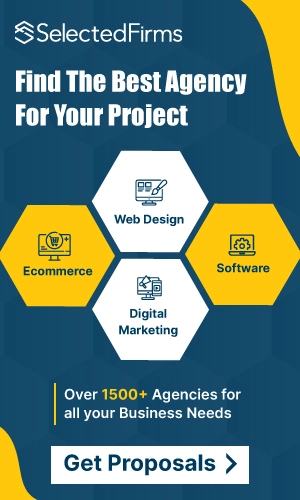- Home
- Blogs
How to Use Enterprise Architecture Consulting Services to Grow Your Business
Maximize your business potential with enterprise architecture consulting services. Transform your operations and accelerate growth.

Enterprise architecture (EA) consulting services help companies design, plan and implement holistic frameworks to align technology and business goals. Companies increasingly rely on technology to operate and compete, so having a sound enterprise architecture becomes crucial. EA Consulting provides strategic guidance on optimizing systems, data, processes and infrastructure.
Hiring enterprise architecture consultants brings various benefits that elevate your business to the next level. This article explores how you can leverage EA consulting to enhance agility, innovation, customer experience and more.
Streamlining Systems and Information Flows
A key goal of enterprise architecture is streamlining systems, and information flows across departments. Enterprise architecture consulting services help you with:
- Map business capabilities. Consultants start by understanding your business capabilities—the activities that create customer value. This clarity helps technology support actual business needs.
- Standardize and integrate systems. Hundreds of disjointed applications create data silos and process inefficiencies. Consultants architect integrated systems using common standards and data models. This improves communication and performance.
- Design information flows. By mapping how information enters, flows through and exits the organization, consultants identify and resolve disconnects for smoother operations.
The study Bizzdesign claims that organizations with mature enterprise architecture practices have a competitive advantage. They increase company productivity and flexibility and reduce costs.
Driving Innovation and Agility
Sophisticated technology architectures are crucial for rapidly launching innovative products/services and adapting to market changes. EA consulting helps you build these strategic foundations:
- API-based architectures. Consultants design loose couplings between systems through modern APIs. This makes it faster and easier to connect applications or add new capabilities.
- Cloud migration. By assessing the suitability of workloads for cloud hosting, consultants guide optimal migration. This provides flexibility to scale resources on demand.
- DevOps enablement. Consultants institute DevOps tools and culture for faster and more reliable delivery of software updates. This accelerates the launch of new features.
For example, Capital One relies on robust enterprise architecture to roll out over 100 new software releases daily with speed and control.
Improving Customer and User Experiences
Customers judge companies harshly on service quality. Enterprise architecture initiatives directly impact user experiences:
- Omnichannel experience. Consultants help integrate data/processes across physical and digital touchpoints, connecting journeys across channels for smooth, personalized engagements.
- User research. Through user interviews and observation, consultants uncover pain points and refinement areas. Architectural improvements are then made accordingly.
- Performance engineering. By benchmarking and load testing systems, consultants prevent transaction failures, latency and downtime issues that frustrate customers.
Industry research shows that 86% of buyers would pay more for a better customer experience. Enterprise architecture builds the backbone for delivering consistency, performance and personalization.
Increasing ROI from Technology Investments
EA programs align technology decisions with business objectives for improved ROI:
- Rationalizing applications. Consultants identify redundant and obsolete applications to retire, saving ongoing licensing, maintenance and integration costs.
- Tech investment planning. By maintaining technology roadmaps aligned with business priorities, consultants guide the optimal allocation of IT budgets over time.
- Vendor governance. Consultants institute processes for standardized vendor evaluation and integration, which reduces the costs of complex custom integrations.
Technology spending is often well-spent on shelfware and duplicate tools. Working with enterprise architects decreases such leakage and boosts ROI. By carefully aligning technology investments with strategic business objectives, enterprise architecture (EA) programs can significantly improve the return on technology investments. EA consultants bring a holistic, cross-functional perspective that helps organizations avoid common pitfalls and maximize the value of their technology spend.
Securing and Protecting the Organization
Cyberattacks and data breaches carry severe financial and reputational damage. Security is an integral aspect of enterprise architecture:
- Identity and access. Consultants architect fine-grained access policies and centralized authentication systems. This limits unauthorized data access.
- Encryption. Sensitive information is encrypted end-to-end across communication channels and at rest within databases, preventing exposure even if hacked.
- Monitoring. Behavioural analytics and AI-based tools are implemented to detect threats and anomalies early. Rapid response limits impact.
According to the IBM Cost of a Data Breach Report for 2023, the average cost of a data breach globally hit a record high of $4.45 million. Robust enterprise security architecture protects your most vital asset: data. Organizations can safeguard their operations and reputation in an increasingly hostile cyber landscape by prioritizing security at every layer, from identity management to resilience planning.
Developing a Strategic Roadmap
The full benefits of enterprise architecture manifest over months and years. Enterprise architecture consulting services develop long-term roadmaps aligned to your specific business landscape and objectives:
- As-is assessment. Consultants thoroughly document existing technology components, integrations, data, risks and pain points. This baseline focuses on improvement efforts.
- To-be vision. Based on your strategy and constraints, consultants define an aspirational future-state architecture and critical milestones for getting there.
- Transition planning. EA roadmaps lay out sequenced initiatives across domains like security, infrastructure, applications, etc., to achieve the to-be vision pragmatically.
- Stakeholder alignment. Successful roadmaps involve continuous engagement and alignment with key stakeholders. This ensures that strategic objectives are met and all parties clearly understand the roadmap's goals and benefits.
- Performance metrics. Identifying and tracking key performance indicators (KPIs) helps measure the roadmap's effectiveness. Regular reviews and adjustments based on these metrics ensure the roadmap remains aligned with evolving business needs and priorities.
- Change management. Implementing an enterprise architecture roadmap often requires significant processes, culture, and technology changes. A robust change management strategy helps manage resistance, facilitates smooth transitions, and ensures stakeholders are prepared and supportive of the changes.
- Technology and innovation. Staying abreast of emerging technologies and innovations is critical. Roadmaps should include provisions for incorporating new technologies and adapting to technological advancements to maintain a competitive edge.
- Training and development. Ensuring that staff have the necessary skills to work within the new architecture is vital. Continuous training and development programs should be part of the roadmap to build and maintain the required expertise.
With sound roadmaps, companies evolve architectures in a structured fashion rather than ad-hoc reactive changes. This prevents architectural drift and technical debt accumulation over time for sustained gains.
Choosing the Right Enterprise Architecture Consultants
While the benefits of enterprise architecture consulting are multifaceted, finding skilled consultants poses challenges. Consider these tips:
- Industry experience. Seek consultants with depth in your specific industry, such as healthcare or finance. They can apply lessons learned from similar clients.
- Technical and business blend. Choose consultants who combine technology mastery with keen business acumen to shape solutions suited for your operating model.
- Transformation record. Validate case studies and examples where the firm has successfully executed large client modernization programs.
- Methodology. Ask about the consultants' specific approaches for EA planning and technology rationalization to assess fit.
- Cultural alignment. Confirm that the consulting firm's culture and values align with your organization's for smooth collaboration.
The right enterprise architecture consultants become trusted advisors in transforming strategic plans into operational reality with technology. Given the profound business impact and multi-year engagement, selectivity is key here.
Conclusion: Realizing the Strategic Value
Enterprise architecture may seem like an IT concern, but it is a vital business capability for competing in dynamic markets. Beyond cost efficiencies, EA consulting helps unlock innovation, resilience and differentiated customer experiences over the long term. It pays dividends to invest in a robust enterprise architecture foundation and partner with specialists to guide your journey. With sound enterprise architecture, technology directly elevates business performance and leadership rather than just enabling baseline operations.

